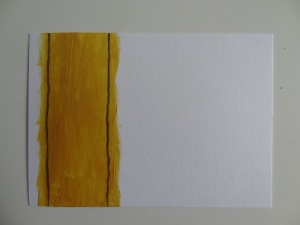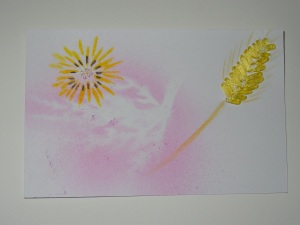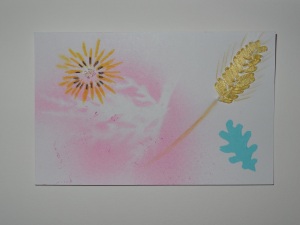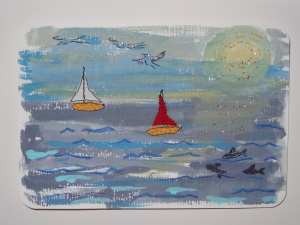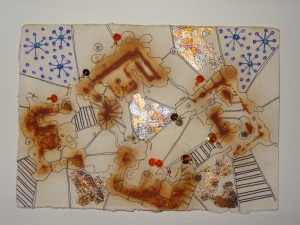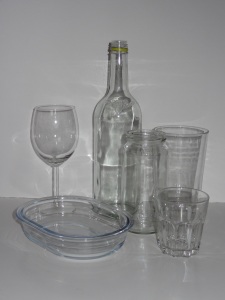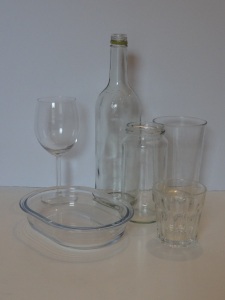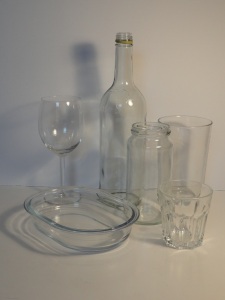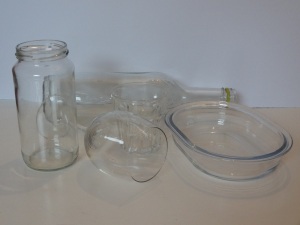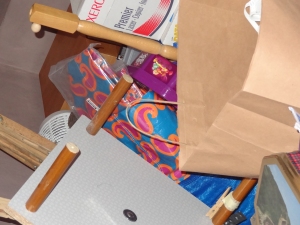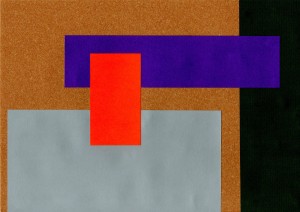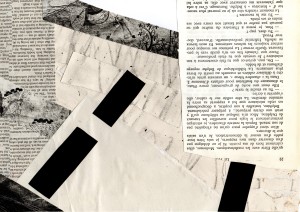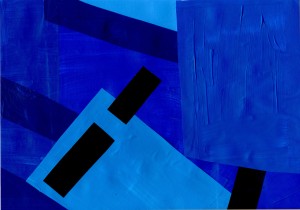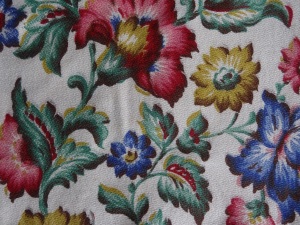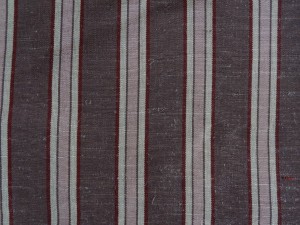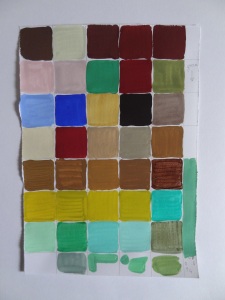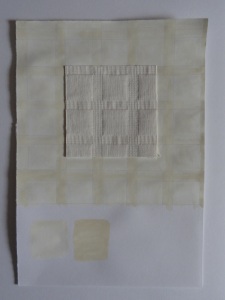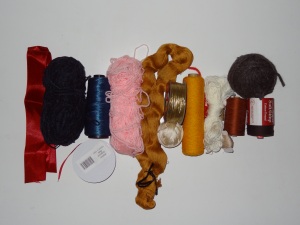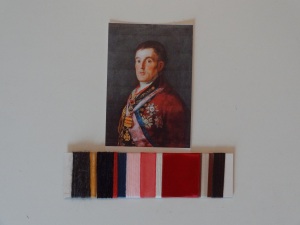Research Point One – Use of colour
Voyage Decoration
Produces Wallpapers, wall art and furnishing fabrics using digital printing methods. These methods allow the items they produce to have painterly qualities as the print is taken directly from a digital scan of the original artwork.

Merapi
http://www.voyagedecoration.com/rashiekas-garden-wall-art-collection/merapi.php
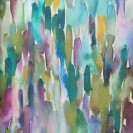
Azim
http://www.voyagedecoration.com/iridescence-wall-art-collection/azim.php
Many of the items produced used muted or chromatic grey colour palettes, there are very few bold, primary colours used in these products. This allows for a good tone between products from different series of products, thus making it easy for consumers to purchase a range of items from this one supplier, get them home and not have them clash with each other. Many of the staged rooms photographed on this site had neutral or white items placed to contrast with the coloured items produced by Voyage Decoration. This allowed the coloured items to appear very brightly coloured in comparison to the neutral items they were sat next to.
Marimekko
https://marimekko.com/gb_en/
Finnish design company, founded in 1951, producing clothing, bags, accessories and home decor.
UNIKKO – This design has been produced since 1964 and is still in print today. It uses four colours and a large, simplified flower motif.
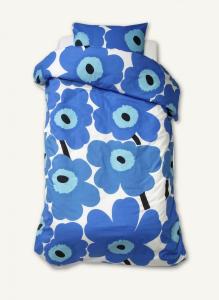
MAISEMA – Designed by Fujiwo Ishimoto, uses shades of blue in repeated squares.

Marimekko uses large motifs and a limited number of colours in each of their prints. This gives a clean feel to the prints produced.
The company has also put its design on a FinnAir A340. They have designed textiles and crockery for FinnAir for several years. All items use blue and green to represent “Finland’s thousands of lakes and beautiful clean nature.”
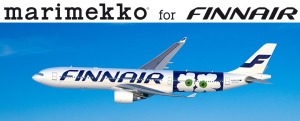
http://www.finnair.com/gb/gb/marimekko
Mary Katrantzou
Fashion designer with a background in architecture, textile design and print.
Karantzou uses digital printing to produce bold, colourful prints often using many clashing colours.
M by Moncler used some of these prints in a capsule collection, Winter 2013
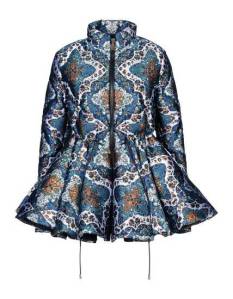
These padded winter jackets are not often seen with such cheerful patterns on. Moncler produces winter jackets and has a history with equipping mountaineers for expedition. This print is a good contrast to the practical nature of the jacket underneath it.
http://www.sickathanaverage.com/wp-content/uploads/2013/11/m-moncler-by-mary-katrantzou-peplum-down-jacket-in-deep-jade.jpg
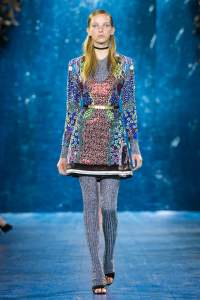
http://www.marykatrantzou.com/collections/ready-to-wear/spring-summer-2016/runwa
The dress pictured above uses very few colours but by placing small amounts of each colour across the piece optical mixing is employed to make the dress look like it is printed with many more colours than were in fact used.
Wallace Sewell
Founded by Harriet Wallace-Jones and Emma Sewell.
“Designed in the South, Woven in the North” the scarves, throws and cushions designed by Wallace Sewell contain bold stripes and large blocks of colour. The colour palettes they employ range from the muted colours below to the bright red and blue used in the London Underground moquette.
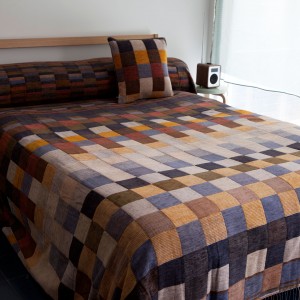
http://wallacesewell.com/category/throws

http://wallacesewell.com/project/transport-for-london–underground-moquette
Transport for London – Underground moquette
Cole & Sons
Founded in 1875 as a block printer working for other companies producing wallpapers.
The company has an archive of over 1800 block print designs and 350 screen print designs, including original drawings and designs for Buckingham Palace and the Houses of Parliament.
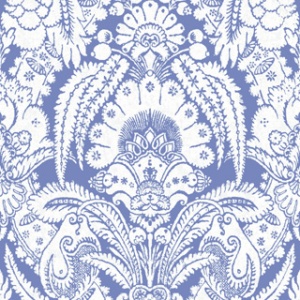
Albermarle
http://www.cole-and-son.com/en/collection-albemarle/wallpaper-94/2012/
Produced from an archive wallpaper sample the above image reflects the use of colour in historical wallpaper printing. A woodblock would be required to print each colour so papers would frequently have one printed colour only with the background paper serving as the second colour. More colours meant more blocks and consequently more expense. The richer the home, the more colours on their wallpaper.
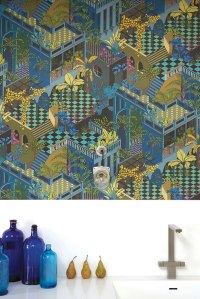
Geometric II – Miami
http://www.cole-and-son.com/en/collection-geometric-ii/wallpaper-105/4018/
The above wallpaper contains many more colours that the original hand printed papers. Had this been block printed many blocks would have to have been cut, one for each colour, and aligned correctly. Advances in colour printing have allowed fabrics and materials with many colours to be printed quickly and easily however they have lost some of the ‘feel’ that comes with hand printed blocks, often looking a little flat when compared to their historical counterparts.
Norma Starszakowna
Scottish artist Starszakowana uses heat-reactive pigments, dyes, resin, metallics, digital, screen & relief print and hand-painting to create textile pieces for interior installations and fashion.
The colours used, to some extent, are not under the control of the artist as patination, heat reactivity and reaction of materials with each other are seen in this work, often leading to small random areas of colours resulting from chemical processes and reaction.
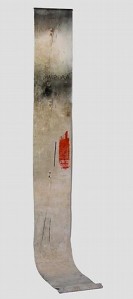
Dispora
http://www.vam.ac.uk/content/articles/d/diasporas-hanging-textiles/
Few colours can be seen from the photograph above but many tones and shades are visible from the heat reactive pigments and surface treatments when the original is viewed close up. This is an example of having some understanding of the materials used but still employing an element of serendipity as the exact outcome of the work might not be completely controllable.
Paul Smith
“You can find inspiration in everything and if you can’t look again.” So says the title of Paul Smiths recent book.
He is most well-known for his stripe design, the colours of which were taken from samples of traditional Guatemalan fabric. The stripes have been used on clothing, home accessories and even a car, via a partnership with Mini. This is a good example of colours being taken from a textile to form a colour palette for a new work.

http://senatus.net/event/paul-smith-presents-multi-stripe-mini-exhibition-singapore/
Vlisco
The Vlisco group produces African printed fabric through a wax resist process, also known as ‘Wax Hollandais’ after the source of the original technique.
Each length of fabric undergoes 27 separate treatments over a two week period. A process that is still kept secret.
The colours used are mixed in house and are very vibrant. The fabrics are printed and dyed and the finished lengths are treated with an indigo dip and the final step in the dyeing process.

https://www.vlisco.com/en/vlisco/types/wax-hollandais/vl039250.06/
The indigo dip brings all the colours together by giving them indigo as a common shade. This method is often seen in Indian textiles where sari fabric is recycled in to large throws for interior decor. The sari pieces may all be very different colours but by dying them in the indigo the origianl colours all become shades of the indigo.


Ptolemy Mann
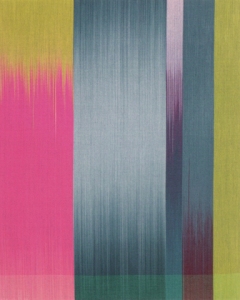
http://www.ptolemymann.com/rectalinear.html
The hand woven piece above is part of the rectalinear series. Mann hand dyes threads and when woven they result in this Ikat like pattern, where shades of one colour appear to melt in to another colour.
Much of this work has large, blocked areas of colour often using muted colours.
Mann also keeps a blog at https://significantcolour.wordpress.com/ this is mostly a marketing tool to showcase new work, exhibitions and commissions but there are occasional posts regarding inspirations and considerations about her own work such as https://significantcolour.wordpress.com/2015/05/19/this-creative-life/
Research Point Two – Digital Resources
A selection of links to online tools to create colour palettes were provided in the course materials. I have had a chance to use five of them and my results are posted below. Where a palette or colour scheme could be produced from a photograph I have used the same photo in each tool to give a comparison between each, posted below.
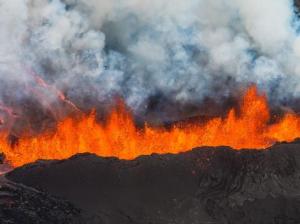
Colorhunter
http://colorhunter.com/
It is possible to upload photos to this site. I used some of my own photos and the site crashed each time. These files may have been too large but small images from the internet did work.

The palettes created from these images were five colours and seemed to be the five most prevalent colours in the image. This meant that any accent colours present in small amounts were not picked up in to the palette. This would be a good tool to use to determine the most dominant colours in an image.
Adobe
https://color.adobe.com/create/color-wheel/
This was an easy to use tool to create colour schemes conforming to colour theory. It was easy to choose the first colour and then select a rule that the colour scheme should meet such as analogous, complementary etc. Dark colours seemed difficult to select from the wheel but could be made using the sliders below the colour selections.
Each palette produced was five colours.
By clicking on the small camera icon on the right hand side of the screen photos could be uploaded to this site. A palette of colours was then selected from it. My own photos worked on this site so it would be my best option if I want to work from scans of my work or my own images. The colour schemes produced also pick up some of the accent colours in the image, this was missing from the Colorhunter site.




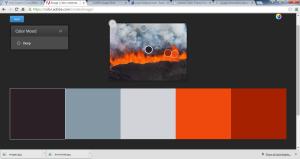

The custom colour schemes could also be manipulated from cool, bright, dark etc. It is also possible to sign in to the site to save any colour schemes produced.
ColRD
This site can be used to determine the hex value of a colour, useful for digital work if an exact reproduction of a single colour is required.
A colour gradient can be made to show shades from one colour to another.
Palettes of up to ten colours can be shown together on the screen. They are a bit fiddly to produce though as there are a selection of sliders on the screen that can be moved to change colour balance, saturation and hue. Hex values can also be entered directly. This was the largest palette size available on any of the sites I tried.

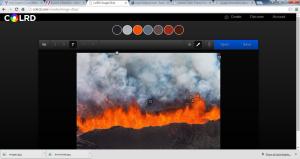
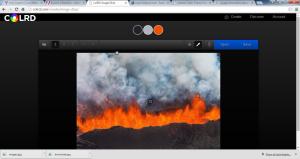
In ‘Image DNA’ photos can be used to generate palettes of three, five or seven colours. The trial palettes I created picked up a good selection of the visible colours.
Color
http://color.hailpixel.com/
This site works in a slightly different way to the others I tried. First the cursor is moved around the screen to select a starting colour. By clicking on the screen this colour is saved. Then a second colour can be selected and saved on the screen next to the first. Colours can continue to be selected and striped across the screen.

The hex number is provided for each of the colours selected, these could then be used in other digital programs to replicate the colours selected.
Mudcube
http://galacticmilk.com/sphere/
The link given in the course materials redirects to the website above.
This seems to be a more academic approach to creating colour schemes.
A colour is first clicked on the wheel and then a number of ‘arms’ show the position on the colour wheel of the other colours in the scheme selected. The colour scheme can be changed through a series of drop down menu boxes, along with a number of vision selections such as decreasing single colour content. These options give some interesting colour schemes that wouldn’t be possible using only the standard colour scheme ‘rules’.
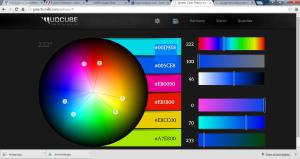 .
.
These sites seemed to do the same things slightly differently.
I didn’t like the palettes the colorhunter site produced as it only picked up the first five colours in a piece and was lacking accent colours. Maybe this would be better if a small section of an image was uploaded to narrow down the area over which the site searched for colours.
I liked the Adobe site best for producing a colour scheme from my own photos. It was fast, easy to navigate and produced a palette with large enough colour blocks on my screen to let me appreciate the colours selected. Also the custom palette could be manipulated to be darker etc through an easy menu selection.
The Mudcube site gave some interesting colour schemes when using the vision options. It would be good to use this to provide some alternative colour scheme options.
The hailpixel site seems to be more suited to digital design where knowing the exact hex number of a colour is required to reproduce it elsewhere. This may be useful in the future so is a good tool to know about.
ColRD would be useful to produce three and seven colour palettes from a digital photo. It does not seem to select the same colours as Adobe so may offer a good alternative palette selection.
From the samples I have produced in each tool it seems that these sites may be best used in tandem rather than independently. Single colours could be picked in hailpixel, transferred to Adobe and then alternative palettes produced in Mudcube.
Digital photos could be uploaded to Adobe or ColRD and the palettes compared. The more ideas the better as far as I am concerned.
One thing to remember is that each screen will show these colours differently so if using the palettes generated to match threads the same screen should be used each time.
Something else to add in to future assignments then.


